How to Pre-Load a BLW Spoon: Self-Feeding Technique with Dawn Winkelmann, MS, CCC-SLP
- The exact steps you can take during the first few days of baby-led weaning to help promote your baby's ability to independently feed from his or her first bites!
- Why most of the baby spoons on the market are designed for PARENTS to feed babies and why she developed the TINY SPOON that let's BABIES be in charge of self-feeding!
- How your baby learns to dip and then scoop and then eat independently - Dawn's walking us through the various spoon-related feeding milestones in infant feeding.
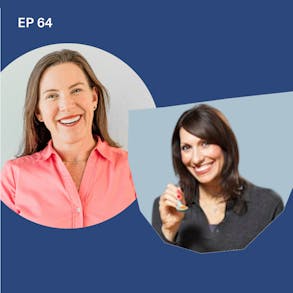
LISTEN TO THIS EPISODE
Episode Description
Yes your baby CAN learn to self-feed using a spoon! You might have heard that baby-led weaning means NOT using purees or a spoon...but that’s not the whole story. Purees are an important texture for babies to master - they’re just not the ONLY texture babies can eat!
In this episode I’m joined by BLW expert Dawn Winkelmann, MS, CCC-SLP. Dawn specializes in pediatric swallowing and she’s the feeding expert for ezpz. Dawn also designed the ezpz Tiny Spoon - the award winning baby-led weaning spoon that is REMARKABLY different than any baby spoon you’ve ever seen before!
You can honor the self-feeding principles of baby-led weaning AND teach your baby to self-feed by spoon using Ms. Dawn’s proven pre-loaded spoon technique. She’s walking us through it step-by-step in this episode all about promoting self-feeding with a spoon!
About the Guest
- Dawn Winkelmann is a Speech-Language Pathologist and Pediatric Feeding Therapist specializing in infant swallowing.
- She has over 25 years of experience teaching parents, therapists, and caregivers how to feed children of all abilities. Through her private practice, Ms. Dawn provides in-home feeding therapy and online coaching, helping parents start solids safely with the baby-led weaning (BLW) approach.
- Ms. Dawn is the inventor of several feeding products, including the award-winning ezpz Tiny Cup & Tiny Spoon (for infants) as well as the Mini Cup & Straw-Training System, Mini Utensils, and Mini Feeding Set (for toddlers), available for purchase at Nordstrom’s, Bed Bath & Beyond, Target, and Amazon.
- She is the co-author of the book Making Mealtime ezpz, which has been highlighted on The View and Shark Tank. Her blogging and product design skills are widely sought-after by pediatric brands seeking expert medical advice.
Links from this Episode
- Check out Dawn’s website with all of her feeding resources at www.msdawnslp.com
- Try out Dawn’s baby-led weaning spoon the ezpz Tiny Spoon and get 10% off using code KATIE10 by clicking here.
- Baby-Led Weaning with Katie Ferraro program with the 100 First Foods™ Daily Meal Plan, join here: https://babyledweaning.co/program
- Baby-Led Weaning for Beginners free online workshop with 100 First Foods™ list to all attendees, register here: https://babyledweaning.co/baby-led-weaning-for-beginners

Latest Episodes
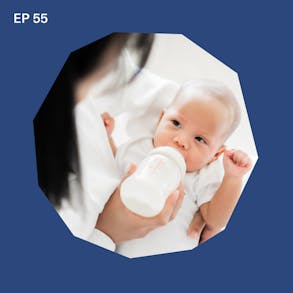
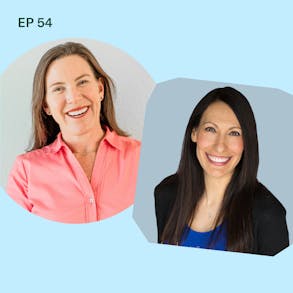
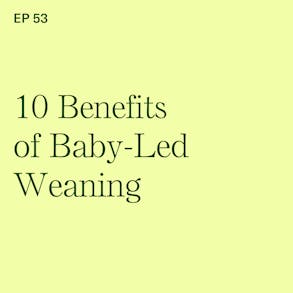
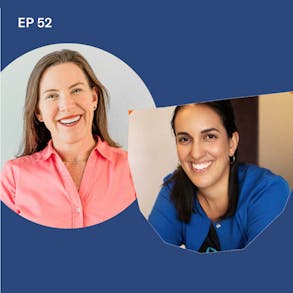
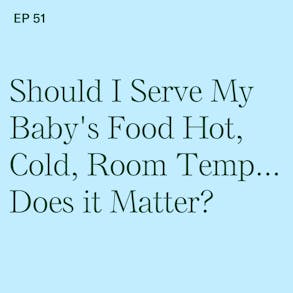
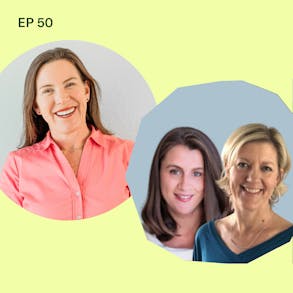
Dawn Winkelmann (0s):
In the beginning stages, babies need to hold the spoon and they need to be able to play with this phone and they need to be able to have opportunities to mouth the spoon and bang this spoon. Those are the four steps to actually starting to use the spoon.
Katie Ferraro (15s):
Hey, there I'm Katie Ferraro, registered dietitian, college nutrition professor and mama of seven specializing in baby-led weaning. Here on the Baby-Led Weaning Made Easy Podcast, I help you strip out all of the noise and nonsense about feeding, leaving you with the competence and knowledge you need to give your baby a safe start to solid foods using baby-led weaning. Hello, and welcome back to another episode of the Baby-Led Weaning Made Easy Podcast. I'm your host, Katie Ferraro. And today I have a very special guest with me, a dear friend and fellow infant feeding specialist, Dawn Winkelmann, is joining me today to talk about how to preload a baby-led weaning spoon.
Katie Ferraro (1m 1s):
She's going to show you, she's not going to show you, she's going to explain to you because it's a podcast, her self-feeding technique and how you can incorporate spoons with baby-led weaning. Now, this is all news to you and you're like what? Baby-led weaning with spoons? I thought it was all about skipping the purees. Go back to the episode that Dawn and I did together. It was a bonus episode where she explained all about how you can incorporate purees with baby-led weaning. And she explains this concept of the preloaded spoon as a way to promote independent feeding from the time your baby's six months at age, but also incorporate naturally pureed foods. We talked about full fat whole milk, yogurt, and unsweetened applesauce, and oatmeal.
Katie Ferraro (1m 41s):
How do we feed these foods while the baby can feed themselves? Dawn's episode. If you go to blwpodcast.com and type in Dawn, you will bring up all of her guests episodes. But today what we're going to focus on is more about the actual technique of how to do the preloaded spoon. Starting from the time your baby is six months of age and it changes and transitions a little bit as your baby becomes more proficient with self-feeding by spoon. And Dawn is the perfect person to have on to talk about promoting self-feeding by spoon because she designed the only baby led weaning spoon on the market. That's the tiny spoon from Ezpz. So she's going to give us a little bit of insight as to how she came to develop that spoon that's for babies, six to 12 months of age.
Katie Ferraro (2m 22s):
And then she's going to share with us a little bit about the newer line, the mini line of utensils for babies 12 months and up, which she also designed. So she's not only a feeding therapist and specialist in baby led weaning and pediatric swallowing, but she's also an award-winning product designer. And I think you guys are really going to enjoy her insight into the background and the rationale and in the different features of the tiny spoon. If you're interested in checking out any of the Ezpz products that Dawn helped design and mentions in today's episode, go online to ezpzfun.com. She's the feeding expert for Ezpz. And I know many of you use their silicone suction matts and bowls, as well as their utensils now and their open cups.
Katie Ferraro (3m 3s):
Dawn designed almost all of those. And again, the websites, ezpzfun.com. If you use the code Katie10, you can get 10% off your purchase, but now with no further ado, I'd love to bring on Dawn Winkelmann, talking all about how to preload a baby-led weaning spoon, showing you herself feeding technique. Well, hi Dawn. Welcome back. It is great to have you on the podcast. Again today, we're getting a little specific, I was hoping you could share with our audience to teach them a little about your preloaded spoon method. This is a technique to help your baby learn how to self feed. And I think it's like news to a lot of parents that a baby can learn how to use a spoon at six months of age. So do you want to talk a little bit about the technique in general?
Dawn Winkelmann (3m 44s):
Sure. So what I like to do is teach parents a few steps to be able to allow babies to feed themselves using a baby-led spoon. So what that means is that instead of using a long handled spoon, that we actually fill up the food and shove into baby's mouth, we're actually having a short handled spoon that allows babies to be able to feed themselves independently. But of course we have to preload that spoon because baby's fine motor skills in their hand and mouth coordination hasn't been developed yet. So the first thing that we need to do, I have a three-step approach for this is that we are going to allow babies to kind of not on the spoon.
Dawn Winkelmann (4m 27s):
So I like to say, give babies a dry spin with nothing on it, to kind of practice with in order for babies to kind of mouth it, put it in their mouth, play around with it and just kind of get comfortable with the spoon. So that's the first step. The second step to pre-loading the spoon is to guide. So we're going to guide the spoon, we're going to fill that up with a puree, for example, and we're going to put the spoon into baby's hand, and then we're going to guide the spoon to the mouth. Now how we guide the spoon is very, very important. So a lot of feeding therapists will say that you use a hand over hand approach. So that means you're kind of placing your hand over the baby's hand and kind of forcing them to bring it to their mouth.
Dawn Winkelmann (5m 9s):
I like to use a hand under hand approach, and that is basically gently guiding that spoon instead of actually forcing or feeling like you are you're in control. Again, the fundamentals of baby-led weaning is allowed baby to have control. If you put your hand over hand approach, then you're kind of in control. So a hand under hand approach that kind of helps it's a little bit more gentler, and it's a nice way to guide the spoon to the mouth at first. And then step three is you're going to give the spoon by placing it onto the side of the bowl or mat. So you're going to fill up that spoon. You're going to place it so that all baby has to do is just grab the handle and put it into their mouth.
Dawn Winkelmann (5m 52s):
And we want to set them up for success. So we want to actually, you know, put the food on the spoon bowl, placed it at an angle for them to be able to grab that really easily. And those are the three steps to being able to use a pre-loaded spoon to help with baby-led weaning.
Katie Ferraro (6m 6s):
Okay, so I know some parents freak out when they're starting baby-led weaning, especially if their baby's not immediately getting the hang of the spoon and they may be trying to eat some of the soft purees food with their hands when we want them to use the spoon. So I know that your answer, cause I work with you a lot. You're going to say, well, that's developmentally appropriate or typical, but could you take us through how a baby actually learns to use a spoon from a developmental standpoint?
Dawn Winkelmann (6m 28s):
Sure. So in the beginning stages, babies need to hold the spoon and they need to be able to play with this spoon and they need to be able to have opportunities to mouth the spoon and bang the spoon. Those are the four steps to actually, the precursors to actually starting to use the spoon. So when we're talking about holding the spoon, that's just giving baby a chance to actually manipulate that and really feel this new object. Babies are supposed to start to bring objects like a spoon to their mouth between four and six months of age. And so we want to allow them to be able to hold that spoon and have those opportunities. Then secondly, we want them to be able to play with it and playing with it might mean, you know, throwing it, dropping it, sticking it, you know, in their ear and, you know, being able to kind of play with it and have that opportunity to play with it and then mouthing it.
Dawn Winkelmann (7m 20s):
Now they're mouthing and they might be mouthing the wrong side of the spoon. They may be, you know, suckling on the, on the handle instead of actually on the spoonful, but they are, should be allowed to have that opportunity to be able to mouth the spoon and then finally banging this spoon. So they're going to bang it onto their high chair tray, and it's kind of annoying, but it's really important for babies to actually work on those fine motor skills in order to help manipulate the spoon to actually be successful and go into their mouth. So those are the beginning stages. And then the next stage is introducing dipping and that is around nine months of age, babies are gonna start to be able to dip the spoon.
Dawn Winkelmann (8m 1s):
So you want to have a spoon that baby can actually put into a puree for example, and be able to bring that to their mouth. So it's just kind of dipping in and dipping out. Now I'm looking for that skill to kind of be occurring at nine months of age, but I've seen six month old babies mastered their skill. If they have all of these opportunities to try it. And then lastly is introduced scooping and that can happen anywhere between 11 and 18 months of age. But again, I've seen babies as young as eight months of age being able to scoop. So we want them to be able to have those opportunities to mouth and play with the spoon and then learn to dip the spoon and then learn to scoop the spoon. So again, it's a developmental process.
Katie Ferraro (8m 42s):
Now I remember when I was starting baby-led weaning with my sixth and seventh kids, Gus and Hannah who are twins. And I was talking to you a lot about the spoon feeding stuff. I was frustrated because there wasn't a spoon out there that fit so many of the different specs that you're mentioning to help promote safe self-feeding from the baby's first bites. Like remember I was using some of those foods, like with a really long handle. My daughter is like basically gagging herself on it. And then there was one with the bowl was too fat. Then there was another one where there was one product for dipping. And then you had to buy a different scoop spoon to learn how to scoop. And it kind of was good timing because at that very time, when they were just starting solid foods, you developed a spoon for baby-led weaning called the tiny spoon for Ezpz.
Katie Ferraro (9m 22s):
So I was wondering if you could talk a little bit about why you developed your baby-led weaning food, which is called the tiny spoon.
Dawn Winkelmann (9m 29s):
Yes, I designed it because of exactly what you said, Katie, there just wasn't anything out there that I could really consistently promote. And it's because the spoons that were out there were not baby-led. So that's again going against the fundamentals of baby-led weaning, allowing babies to actually make their developmental milestones and have control of the food and utensils in their lives. So the difference between the spoon that I developed, the tiny spoon for Ezpz and what's out there is, let's start with the handle. Most spoons have long handles, and that is not for babies to feed themselves as for parents to do that. And we want to have a baby-led approach, which allows babies to actually put the utensil in their mouth.
Dawn Winkelmann (10m 15s):
So I designed the tiny spoon to have a short, fat, round handle that makes it very easy for their motor skills to be able to hold onto the spoon themselves and be able to feed themselves. That's the first thing that's different. The second thing is the spoon bowl. So the very beginning of the spoon, the front of the spoon is a bowl and that's what we call it in the feeding world. The spoon bowl and most boom bowls are very large, which fill up the mouth of the baby because we know that babies have tiny mouths, but we make these products that are just so huge and it can cause choking. And so I wanted to have a spoon bowl that is flat, but also allows for oral development.
Dawn Winkelmann (10m 56s):
So the spoon bowl that I designed is narrow just like baby's mouth. And we want the tongue to actually cup around this spoom and be able to help take that food off. So if you have a spoon bowl that's really large, or that's really deep, then babies have to suckle and they can easily choke on that. So I designed a spoon that has a flat bowl that is small enough for babies to actually bring the tongue up to the roof of their mouth. And so it's really important for babies from a safety standpoint to have that process. The next thing is that I had designed am some sensory bumps to be on the back of the spoon. And the reason why that is, is that some of the families that I worked with were using these spoons to actually have a guard on the spoon.
Dawn Winkelmann (11m 40s):
So it prevents babies to actually put the spoon into their mouth and start to work on what's called grading. It's really important for babies to learn how to put a spoon into their mouth. And maybe the first couple of times of every single meal, the babies will actually put the spoon too far back and elicit their own gag reflex. And we want babies to actually learn how to grade that spoon into their mouth. So what I did is I designed these sensory bumps on the back part of the spoon bowl to actually give baby some sensory input to actually know, okay, that's a little too far, that's the farthest I want to go as compared to other spoons, have a stoppage, a guard on there.
Dawn Winkelmann (12m 23s):
And so babies never learned how to be able to grade themselves. So when they move on to other foods that they can grab onto with her little fist, they shove it too far back and elicit a gag and can actually choke because they're not having that practice with a safe utensil. So I made sure that there were sensory bumps on the spoon instead of having a guard to be able to help facilitate that. And then lastly is I have sensory bumps on the handle of this spoon to be able to allow extra grip for babies to hold onto it. As you know, meal time can get a little messy and also to be able to give them some more sensory input of how they need to kind of hold onto that handle.
Dawn Winkelmann (13m 5s):
So those are some of the differences. And then lastly, it's made out of 100% food grade silicone. So again, there's no plastic, there's no metal, there's nothing hard that's actually going to hurt babies, developing gum line and possibly their teeth that are merging. So it's really easy for them to be able to continue to feed themselves and do it safely.
Katie Ferraro (13m 25s):
The features of your spoon are really unique. It is the first baby-led weaning spoon on the market. Of course, everyone will start knocking it off and copying it. But I do want to mention that the sensory bumps are, have been so effective. I've watched my two youngest learned first with the tiny spoon and those sensory bumps. It just kind of teaches them like, hey, the handle's coming up. It's time to stop. You really watch them getting the hang of it. And I do love that it's 100 percent food grade silicone because so many of the products out there that are spoons, not only are the bowls too fat and the handles too long, but then the metal, which the baby is grading their teeth against or the plastic, which the American Academy of Pediatrics recommends that we avoid the use of additives in products that we're using to feed our baby.
Katie Ferraro (14m 6s):
And that includes plastic. So yours is 100 percent food grade, silicone, not to mention developmentally appropriate. And the spoon she's describing you guys, it's called the tiny spoon. They have a great visual of all of the features of the tiny spoon, that Ezpz the company who she developed it for, they created this graphic. I'm going to put it on the show notes for this episode. So if you go to blwpodcast.com and you search Dawn, it'll pull up all the episodes where she's been a guest on. There'll be a lot of links to the resources that she's describing in there. If you guys want to check out that spoon, the tiny spoon is for six to 12 month old babies it's available at Ezpzfun.com and you can use the code Katie10 for 10% off.
Katie Ferraro (14m 47s):
So Dawn, you recently designed another spoon for older babies and toddlers called the mini spoon. And this is for babies 12 months and up. And I was so grateful when this product came out because you were kind of going at the same timeline as my youngest twins were Gus and Hannah, when they were about 15 months old, I noticed they were becoming frustrated with the tiny spoon, which they've been using since six months of age. And now that tiny spoon is for six to 12 month olds, but you have a new spoon called a mini spoon for babies 12 months and up. And I was wondering if you could tell us how that mini spoon differs from the tiny spoon.
Dawn Winkelmann (15m 20s):
So I designed a tiny spoon for infants six to 12 months of age because their tongue is smaller. Their mouth is smaller. Again, we want to have a narrow spoonful inside of the mouth. Whereas the mini spoon is more geared towards an older mouth. So a toddler's mouth, they have a bigger tongue, they have a bigger oral cavity they're growing and developing. And so we needed to have a different spoon for that. And the importance of the transformation between tiny and mini is this. We needed to have a spoon that is easy to transition to. A lot of the babies that I saw in feeding therapy would not be able to transition to a toddler spoon very easily.
Dawn Winkelmann (16m 2s):
So it was really important for me to design a product that actually looked very similar. So the tiny spoon and the mini spoon look very similar. In fact, they even still have the sensory bumps in silicone to be able to help with that transition. The handle is very similar. It's just a little bit longer and slightly thinner for more toddler appropriate grips. And then at the very front of the spoon that spoonful, for a tiny spoon is made out of 100 percent silicone. And the mini spoon is made out of nylon because now we're expecting that toddler to actually start scooping. And so we need to have a little bit harder of a material to be able to scoop as well as be able to bring a bigger amount too.
Katie Ferraro (16m 44s):
Yeah, I noticed on that mini spoon is definitely sturdier and that's because the bowl there it's made out of nylon. So it helps the babies to scoop, which is what we want them to be doing. And they should be able to do after they turn one. I've got another question though. The tiny spoon comes in a two pack, so that's the one for six to 12 month olds, but the mini spoon, it also comes in a two pack, but it looks a little different. Could you explain that for the 12 month and up babies trying out the mini spoons?
Dawn Winkelmann (17m 10s):
Yes. At 12 months of age, we want babies to actually learn a new skill, which is fork use. Now we don't have a fork in the tiny line for infant six to 12 months because babies are not, we're not expecting them from a developmental standpoint to actually be able to use a fork. However, we are expecting toddlers to be able to start to learn, to use a fork. And that's the timeline that's more developmentally appropriate. So it's a two pack with the tiny line for infants is with two spoons. And the mini line for toddlers is with a spoon and a fork.
Katie Ferraro (17m 44s):
I love the two pack for the tiny spoon because the whole episode we're talking about the preloaded spoon technique and you taught us how do that when you're doing that, having two spoons is nice, cause you're pre-loading and handing one to baby. And while the baby is starting to feed themselves, you can be backing up the second one and getting the baby ready. And that's just more practice because we know with all feeding related skills, the more the baby's allowed to practice, the more proficient they'll become sooner. And Dawn, I wanted to ask you in closing about this kind of phenomenon. I've been seeing a lot on social media. I have noticed a lot of parents giving their babies who are six to 12 months old, the mini spoon. So I'll like, look closely zoom in pause the video. I'm like, whoa, wait up. That's like a seven month old eating off the mini spoon, but the mini spoon is not supposed to be introduced until the baby is 12 months of age.
Katie Ferraro (18m 27s):
Could you give a little guidance around why we don't want to do the mini spoon too early for those babies? Six to 12 months?
Dawn Winkelmann (18m 35s):
Yes. The reason why I designed two separate spoons for two separate ages is because it's not safe for babies to eat off of a large spoon bowl. Basically when we are pre-loading that spoon, we are filling that spoon and we have a tendency to overfill spoons. If the spoons are really big. And so I really encourage parents to purchase the tiny spoon. If your baby is under 12 months of age and purchase the mini spoon, if your baby is over 12 months of age, because again, we want to be able to have the right spoon bowl size for their mouth. We want to decrease the risks of gagging and choking associated with having the incorrect size of a utensil in your child.
Katie Ferraro (19m 19s):
Awesome. Dawn, thank you so much for all this information about how to preload a baby-led weaning spoon. Where can our listeners go to learn more about your work and some more resources on feeding that you provide?
Dawn Winkelmann (19m 29s):
Thank you. They can reach me at msdawnslp.com.
Katie Ferraro (19m 38s):
And you guys, she's also on Instagram @msdawnslp . She's got wonderful information over there. Lots of visuals about how to actually do this preloaded spoon technique. So check her out there. Dawn, thank you so much for being on the podcast. I really appreciate it.
Dawn Winkelmann (19m 50s):
Thank you so much for having me, Katie.
Katie Ferraro (19m 52s):
Okay, so I hope you guys enjoyed that episode with Dawn Winkelmann all about how to do the preloaded spoon technique and a little bit more info about spoons. Like did you ever know there was so much thought and design that went into making a baby-led weaning spoon. Again, if you guys want to check out the tiny spoon in the mini spoon, Dawn mentioned there at Ezpzfun.com. The code is Katie10 for 10% off. Dawn's website is msdawnslp.com. And she's also on Instagram, @msdawnslp. And one thing I wanted to mention, I don't just kind of slipped it in there, but a lot of parents get confused about forks. Let's see. Okay. Yes, a baby should start being able to learn how to feed themselves with a spoon and around the six month mark.
Katie Ferraro (20m 33s):
And then they think the same applies for forks. But Dawn did mention in there that there's no feeding milestone for fork use for babies under 12 months of age. So Dawn and I are going to do a totally separate podcast episode about forks focusing on babies 12 months. And for those of you in the six to 12 month phase, starting baby-led weaning, do not worry about needing to offer your baby a fork. Focus on the spoon. Again, her tiny spoon is for infant six to 12 months, and then check out the mini utensils for 12 month old babies and up, that's her mini spoon and also the mini forks. So I'll be sure to have her back on soon to talk about the mini fork and you guys can get all of the links to the different resources mentioned in this episode.
Katie Ferraro (21m 13s):
If you go to the website blwpodcast.com, just type in Dawn, and you'll find all of her guest episodes along with the links to the resources from our interviews together. Thanks so much for tuning in bye now.
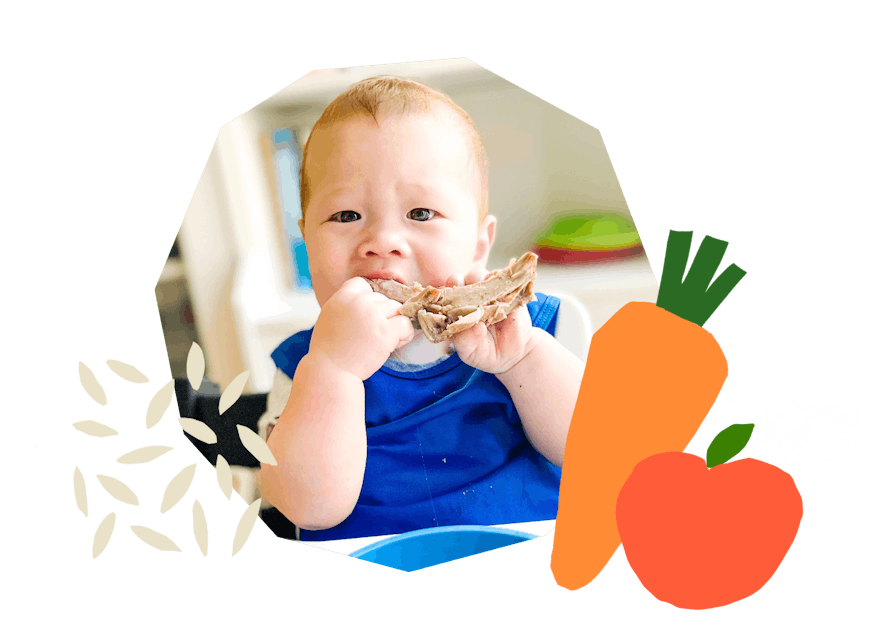
The Program Baby-Led Weaning with Katie Ferraro
A step-by-step digital program for starting solid foods safely and navigating the original 100 FIRST FOODS™ meal plan with baby-led weaning.
 EXPERT-LED, PROVEN APPROACH TO EATING REAL FOOD
EXPERT-LED, PROVEN APPROACH TO EATING REAL FOOD CONCISE VIDEO TRAININGS TO MASTER BABY-LED WEANING
CONCISE VIDEO TRAININGS TO MASTER BABY-LED WEANING 100 FIRST FOODS DAILY MEAL PLAN WITH FOOD PREP VIDEOS
100 FIRST FOODS DAILY MEAL PLAN WITH FOOD PREP VIDEOS
Baby-Led Weaning for Beginners Free Workshop
Is your baby ready to start solid foods, but you’re not sure where to start? Get ready to give your baby a solid foundation to a lifetime of loving real food…even if you’re feeling overwhelmed or confused about this next stage of infant feeding.
Get baby-led weaning recipes and tips delivered to your email inbox.

